
Computational Visual Media
Scope & Guideline
Championing open access to visual media advancements.
Introduction
Aims and Scopes
- Computer Vision Techniques:
The journal emphasizes research on advanced computer vision methodologies, including object detection, image segmentation, and feature extraction, which are pivotal for understanding and interpreting visual data. - Computer Graphics Innovations:
It covers cutting-edge developments in computer graphics, including rendering techniques, 3D modeling, and visual effects, facilitating the creation of realistic and immersive visual experiences. - Machine Learning Applications:
A significant focus is on the application of machine learning techniques to visual media problems, enhancing automation and improving accuracy in tasks such as image classification, object recognition, and scene understanding. - Visual Analytics and Interpretation:
The journal promotes research that combines visual analytics with computational methods, enabling users to interpret complex datasets through effective visual representations. - Interdisciplinary Approaches:
The journal encourages interdisciplinary research that integrates insights from various fields, such as neuroscience, art, and design, to enrich the understanding and creation of visual media.
Trending and Emerging
- Generative Models and Synthesis:
There is a rising trend in research focusing on generative models, particularly GANs (Generative Adversarial Networks), for tasks such as image synthesis, style transfer, and data augmentation, showcasing the potential of these models in creating realistic visual content. - 3D Reconstruction and Modeling:
Recent publications highlight an increased emphasis on 3D reconstruction techniques, including neural approaches and real-time modeling, which are essential for applications in virtual reality and augmented reality. - Cross-Modal Learning:
The exploration of cross-modal learning—integrating data from different modalities (e.g., vision and language)—is gaining traction, reflecting a broader interest in developing systems that understand and relate diverse types of information. - Real-Time Processing and Optimization:
There is a significant focus on real-time algorithms for visual media applications, driven by the demand for interactive experiences in gaming, virtual environments, and autonomous systems. - Visual Analytics for Big Data:
The journal is increasingly publishing work on visual analytics techniques tailored for big data, facilitating the interpretation and visualization of complex datasets in various domains, including healthcare and social sciences.
Declining or Waning
- Traditional Image Processing Methods:
There is a noticeable reduction in publications focusing solely on traditional image processing techniques, such as basic filtering or manual feature extraction, as newer machine learning approaches dominate the field. - Static Scene Analysis:
Research centered around static scene analysis, which includes basic object recognition in stationary environments, has diminished, likely due to the increased interest in dynamic and interactive visual scenarios. - Low-Level Computer Vision Techniques:
The focus on low-level computer vision techniques, such as edge detection or basic image enhancement, appears to be waning as the field shifts towards higher-level abstractions and complex models. - Non-Deep Learning Approaches:
There has been a significant decline in the exploration of non-deep learning methods in visual media, as deep learning continues to become the dominant paradigm for tackling visual computing challenges.
Similar Journals
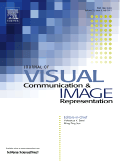
JOURNAL OF VISUAL COMMUNICATION AND IMAGE REPRESENTATION
Advancing Knowledge in Visual CommunicationJOURNAL OF VISUAL COMMUNICATION AND IMAGE REPRESENTATION, published by Academic Press Inc Elsevier Science, is an influential platform dedicated to the realms of visual communication, media technology, and advanced image representation. With a strong focus on interdisciplinary approaches, this journal aims to foster the exchange of innovative ideas among researchers and professionals in the fields of computer vision, image processing, and signal processing. Recognized for its significance, it boasts an impressive impact factor within its category quartiles; notably, it ranks Q2 in Computer Vision and Pattern Recognition and Electrical and Electronic Engineering, while achieving Q1 in Media Technology. Based in the United States, the journal not only provides valuable insights into the latest developments from 1990 to 2024 but also encourages cutting-edge research that enhances multimedia systems and user interactions. As a vital resource for students, researchers, and industry professionals alike, the journal ensures a robust understanding of visual information processing, critical for navigating today's digital landscape.
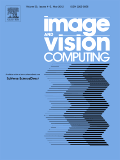
IMAGE AND VISION COMPUTING
Advancing visual technology through innovative research.Image and Vision Computing, published by Elsevier, serves as a leading international journal focused on the dynamic fields of computer vision, pattern recognition, and signal processing. With its esteemed Q1 category rankings in these areas and an impressive standing in Scopus metrics, where it ranks 19th in Computer Vision and 23rd in Signal Processing, this journal has firmly positioned itself at the forefront of academic research and innovation. Established in 1983, it continues to publish cutting-edge research that drives advancements in technology and applications across various domains. The journal is committed to disseminating high-quality, peer-reviewed articles that address significant challenges and propose novel solutions, making it an essential resource for researchers, practitioners, and students alike. While not an open access journal, Image and Vision Computing offers a wealth of valuable insights into the ever-evolving landscape of visual computing technologies.

Image Processing On Line
Fostering global knowledge exchange in cutting-edge technologies.Image Processing On Line (ISSN: 2105-1232, E-ISSN: 2105-1232) is a pioneering open-access journal published by IMAGE PROCESSING ONLINE-IPOL since 2011, dedicated to advancing the field of image processing through the dissemination of high-quality research and innovative methodologies. Based in France, the journal serves as a platform for researchers, professionals, and students to share insights and breakthroughs in the rapidly evolving domains of Signal Processing and Software. With its current ranking as Q4 in both categories according to the 2023 category quartiles, and a Scopus ranking highlighting its significance within the computer science field, the journal is focused on nurturing contributions that push the boundaries of image processing techniques. Accessible to a global audience, Image Processing On Line is crucial for those engaged in both theoretical explorations and practical applications, ensuring a collaborative repository of knowledge that fosters innovation and development in this vital area of technology.
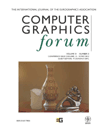
COMPUTER GRAPHICS FORUM
Exploring the Future of Digital DesignCOMPUTER GRAPHICS FORUM, an esteemed journal published by Wiley, is a leading platform for disseminating cutting-edge research in the fields of computer graphics and computer-aided design. With a prestigious Q1 ranking in both Computer Graphics and Computer-Aided Design and Computer Networks and Communications (2023), this journal consistently showcases high-impact studies that influence the development of visualization techniques and graphic systems. Covering a wide array of topics from rendering algorithms to virtual and augmented reality applications, COMPUTER GRAPHICS FORUM is committed to fostering innovation and interdisciplinary collaboration within the global research community. Although it does not offer open access, the journal maintains a rigorous peer-review process, ensuring the highest standards of academic quality and integrity. With its rich history since 1982 and an ongoing commitment to advancing the state of knowledge in computer graphics, this journal is essential reading for researchers, industry professionals, and students looking to stay at the forefront of technological advancements.

Jordanian Journal of Computers and Information Technology
Connecting Scholars Through Open Access InsightsJordanian Journal of Computers and Information Technology, published by Princess Sumaya University and SRSF, stands as a significant platform for scholarly research in the realm of computer science, particularly in topics related to emerging technologies and information systems. With its Open Access model initiated in 2015, the journal facilitates global access to high-quality research findings, embodying the principles of knowledge sharing and academic collaboration. The journal's ranking in the Q3 category of Computer Science (miscellaneous) and its placement in the 54th percentile of Scopus' General Computer Science rankings underscore its growing reputation among researchers and professionals alike. Situated in Amman, Jordan, the journal actively contributes to the regional and international discourse on computing methodologies, applications, and innovations, making it an indispensable resource for scholars seeking to advance their understanding and engage with contemporary issues in technology.

International Journal on Document Analysis and Recognition
Exploring the Intersection of Vision and RecognitionInternational Journal on Document Analysis and Recognition (IJDAR), published by Springer Heidelberg, stands at the forefront of research and advancements in the field of document analysis, computer vision, and pattern recognition. With its ISSN 1433-2833 and E-ISSN 1433-2825, the journal is an essential resource for researchers and practitioners focusing on innovations in automatic document processing, image analysis, and artificial intelligence applications in document retrieval and recognition. Recognized as a Q1 journal in multiple relevant categories, including Computer Science Applications, Computer Vision and Pattern Recognition, and Software, IJDAR boasts impressive Scopus rankings that position it among the top-tier publications in these domains. The journal’s converged publication years from 1998 to 2024 offer a rich repository of knowledge essential for both theoretical and practical advancements, ensuring that researchers, professionals, and students can keep pace with the latest findings and methodologies. Access options may vary, but the journal continuously strives to facilitate the dissemination of high-quality research that contributes significantly to the academic discourse in document analysis and recognition.
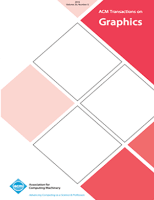
ACM TRANSACTIONS ON GRAPHICS
Advancing Innovations in Computer GraphicsACM Transactions on Graphics, a premier journal published by the Association for Computing Machinery, stands at the forefront of research in the field of computer graphics and computer-aided design. With its ISSN 0730-0301 and E-ISSN 1557-7368, this highly respected publication has maintained a stellar reputation since its inception in 1982, showcasing groundbreaking work that spans the latest innovations and applications in graphics technology. Ranked within the top tier (Q1) of its category in 2023 and occupying the 5th position out of 106 in the Scopus rankings, this journal holds a significant impact factor, reflecting its critical role in advancing knowledge and fostering collaboration among researchers, professionals, and students alike. Although it does not offer open access options, the journal provides a diverse array of scholarly articles aimed at delineating theoretical advances, practical techniques, and emerging trends within the discipline, ensuring that its readership remains at the cutting edge of the evolving landscape of digital graphics.

VISUAL COMPUTER
Connecting Research, Design, and VisionVISUAL COMPUTER is a prestigious journal published by Springer, focusing on the dynamic fields of computer graphics, computer-aided design, computer vision, and software. Established in 1985, this interdisciplinary journal serves as a vital platform for sharing innovative research, applications, and developments crucial to the advancement of visual computing technologies. With a notable Q2 ranking in various categories, including Computer Graphics and Computer-Aided Design, and Computer Vision and Pattern Recognition, VISUAL COMPUTER demonstrates a solid impact within the academic community, marked by its Scopus rankings that reflect its significant contributions to the field. While the journal does not offer open access, it remains a reliable source of high-quality content for researchers, professionals, and students eager to stay abreast of emerging trends and techniques, ultimately fostering collaboration and knowledge exchange within the rapidly evolving landscape of visual computing.
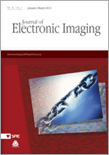
JOURNAL OF ELECTRONIC IMAGING
Connecting Ideas, Inspiring Innovations in Electronic Imaging.JOURNAL OF ELECTRONIC IMAGING, published by SPIE - Society of Photo-Optical Instrumentation Engineers, stands at the intersection of cutting-edge research in various fields including Atomic and Molecular Physics, Optics, and Computer Science Applications. With an ISSN of 1017-9909 and an E-ISSN of 1560-229X, this esteemed journal has been a significant contributor to the scientific community since its inception in 1993, continuing its mission to provide a platform for innovative research through 2024. Operating from its headquarters in Bellingham, WA, United States, the journal is currently categorized in the third quartile for major domains such as Electrical and Electronic Engineering, indicating a robust engagement with contemporary topics and advancements. Although it is not an Open Access journal, it remains accessible to a wide audience of researchers, professionals, and students through institutional subscriptions. With its impactful contributions and a comprehensive view of electronic imaging, this journal not only serves as a vital resource but also drives discussions that shape the future of this rapidly evolving field.

JOURNAL OF MATHEMATICAL IMAGING AND VISION
Bridging Theory and Practice in Mathematical ImagingJOURNAL OF MATHEMATICAL IMAGING AND VISION, published by Springer, stands as a significant platform for advancing the fields of applied mathematics, computer vision, and pattern recognition, among others. With an ISSN of 0924-9907 and an E-ISSN of 1573-7683, this esteemed journal is based in the Netherlands and has been contributing to the scholarly discourse since its inception in 1992, with a converged focus through 2024. It has achieved reputable standings within several quartiles, including Q2 rankings across applied mathematics, geometry and topology, and condensed matter physics, reflecting its impact and relevance. Notably, the journal ranks within the top 5% in Geometry and Topology and maintains robust standings in Statistics and Probability. The JOURNAL OF MATHEMATICAL IMAGING AND VISION is dedicated to publishing high-quality research that bridges theoretical perspectives with practical applications, making it an essential resource for researchers, professionals, and students who are exploring the cutting-edge of mathematical imaging and its interdisciplinary applications.